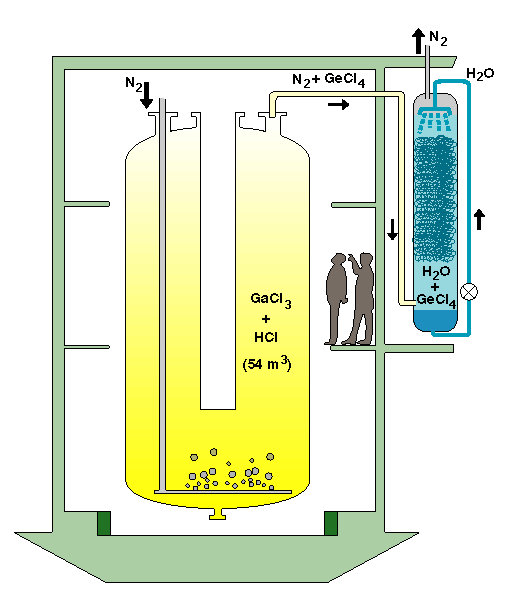

The experiments are based on
71Ga + neutrino --> 71Ge + electron.
(Gallium, Ga has 31 protons while germanium, Ge has 32 protons. Thus one proton got converted into a neutron.)
Conceptually, these experiments are similar to the chlorine experiment. A few atoms of gallium are changed into germanium. The germanium atoms are extracted and then the experiment looks for the decay of the germanium (Ge) atoms, as indicated in the following picture (courtesy of the GALLAX experiment)
The important difference between these experiments and the initial chlorine experiment is that these are sensitive to the lower energy neutrinos that come from the main energy producing reaction in the sun. The prediction for how many of these neutrinos are made should be very accurate since we know the rate at which the sun makes energy.

Result: Neutrino reactions detected, but not as many as expected based on the theoretical calculations.
Here is a link to the Gran Sasso Laboratory in Italy, where the GALLEX experiment. Information about the GALLEX experiment can be found here.
Updated 22 Octobber 2007
Davison E. Soper, Institute of Theoretical Science, University of Oregon, Eugene OR 97403 USA